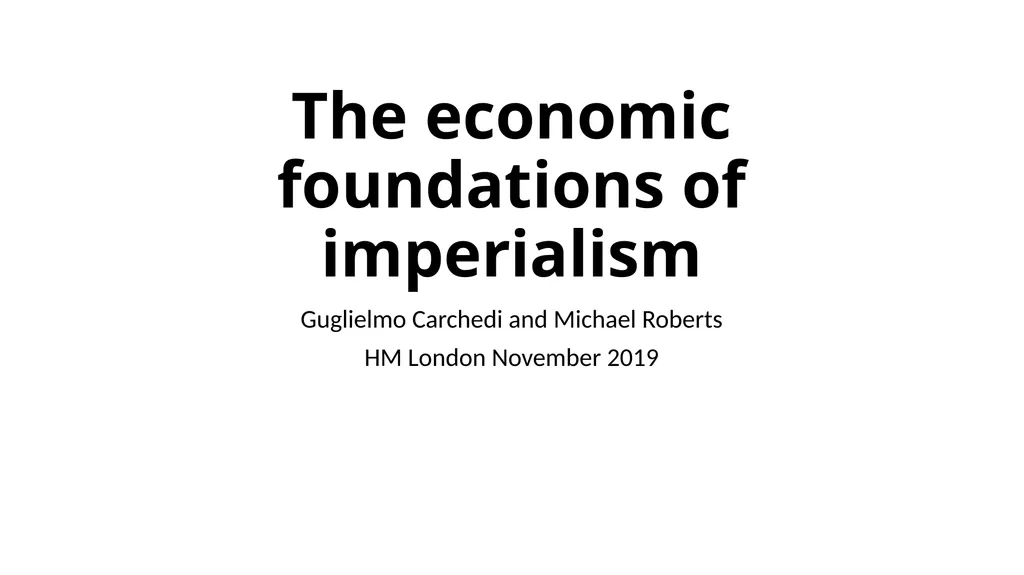The economic foundations of imperialism Guglielmo
Author : trish-goza | Published Date : 2025-05-24
Description: The economic foundations of imperialism Guglielmo Carchedi and Michael Roberts HM London November 2019 Many aspects of imperialism Imperialism is primarily an economic mechanism and not a political mechanism Its basic aim is not political
Presentation Embed Code
Download Presentation
Download
Presentation The PPT/PDF document
"The economic foundations of imperialism Guglielmo" is the property of its rightful owner.
Permission is granted to download and print the materials on this website for personal, non-commercial use only,
and to display it on your personal computer provided you do not modify the materials and that you retain all
copyright notices contained in the materials. By downloading content from our website, you accept the terms of
this agreement.
Transcript:The economic foundations of imperialism Guglielmo:
The economic foundations of imperialism Guglielmo Carchedi and Michael Roberts HM London November 2019 Many aspects of imperialism Imperialism is primarily an economic mechanism and not a political mechanism. Its basic aim is not political dominance but economic exploitation. The former is a means to achieve the latter and not a cause. Focus on the transfer of value Its economic exploitation mechanism (international value transfers) works via normal capitalist competition and not only in monopolist competition (i.e. imperialist surplus-value extraction exists irrespectively of the existence of monopolist super-profits). Value flows from the dominated countries to the imperialist countries in a number of ways. Ways to transfer value Unequal exchange through international trade Global value chain flows (transfer pricing) within multi-nationals Factor income flows (primary income from debt, equity and property) Seignorage (dollar is king) Capital flows (FDI inflows and portfolio flows) The long-term appropriation of value By economic imperialism we mean the long-term international appropriation of value by the imperialist countries from subaltern countries. In the appropriation of surplus value, the level of technological development plays the central role. Imperialism refers first to the appropriation of surplus value by high technology companies from low technology companies in different countries. But imperialism refers also to flows of value between countries. So imperialist countries can be defined as those with a persistent high number of high technology companies as measured by their high national average OCC and thus whose average technological development is higher than the national average of other countries, which are thus economically dominated on this account. Stratification of imperialism Imperialist countries tend to form blocs around themselves. Both the imperialist and the dominated countries are stratified. There is a hierarchy of imperialist countries (on the basis of the hierarchical structure of the OCCs) and a hierarchy of dominated countries. Most countries, including the US as the hegemonic imperialist nation, are both expropriators and expropriated of surplus value by virtue of the structure of their technological development. The difference is that the imperialist countries are net appropriators of surplus value for long periods, due to their persistently higher level of technological efficiency, especially in the high technology sectors. Imperialism and sub-imperialism The well-established imperialist powers still sit at the top of the primary income pole. The vast majority of countries are forced to remain in a dominated role – paying out much more than receiving in primary income. In our














